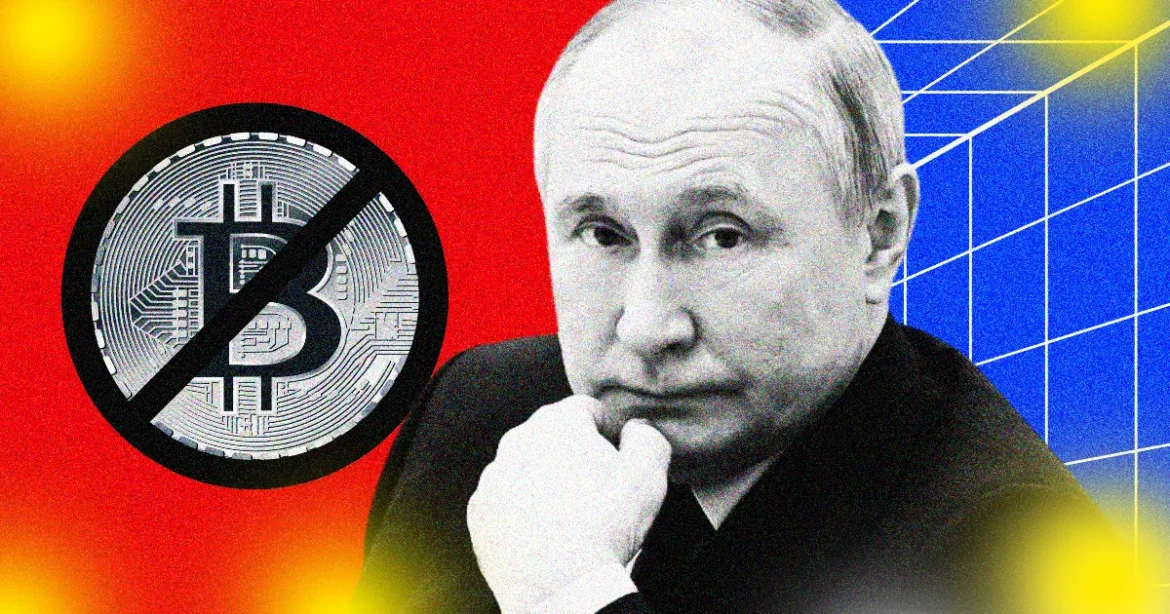Russia’s Complex and Evolving Crypto Regulatory Landscape in 2024
Understanding Russia’s approach to cryptocurrency in 2024 requires navigating a landscape marked by conflicting priorities: tightening regulatory oversight, leveraging digital assets to evade Western sanctions, and fostering a nascent cryptocurrency ecosystem under rigid state control. This report explores the multifaceted developments across legislation, enforcement, economic strategy, and cybercrime implications shaping Russia’s crypto milieu.
Crypto Regulation Tightens Under Moscow’s Watchful Eye
Central to Russia’s current stance is Rosfinmonitoring, the country’s financial watchdog agency responsible for anti-money laundering (AML) efforts. The agency publicly declared that cryptocurrency transactions are not private, reflecting a broader intent to eliminate anonymity traditionally associated with crypto. To enforce this, Rosfinmonitoring plans to provide banks access to a blockchain tracking tool named Transparent Blockchain by the end of 2024, enabling thorough monitoring of crypto flows.
Moreover, Russia has intensified AML compliance by mandating that crypto exchanges operating within the country submit transaction data directly to law enforcement agencies. Olga Tisen, legal chief at Rosfinmonitoring, warned Russians through media that crypto brokers share client transaction records with police. This indicates a definitive shift to centralized control and surveillance of cryptocurrency transactions, aligning with Russia’s broader efforts to prevent illicit activities like money laundering and ransomware funding.
While Moscow permits cryptocurrency use for international payments under newly approved legislation, this is balanced with outright prohibitions on certain stablecoins such as Tether (USDT), as part of efforts to curb risks from unregulated foreign digital assets. Latest laws also provide a clear legal framework to tax crypto mining and transactions, formalizing the industry but simultaneously increasing oversight.
Cryptocurrencies as a Sanctions Evasion Tool and Economic Strategy
Amid increased Western sanctions targeting Russia’s financial system, Moscow views cryptocurrency not just as an economic innovation but as a strategic instrument to bypass sanctions. Reports from Chainalysis and other sources reveal plans to launch BRICS-aligned stablecoins denominated in Chinese Renminbi (RMB) and backed by new crypto exchange platforms under development in St. Petersburg and Moscow. These initiatives aim to create alternative payment networks decoupled from Western-controlled financial infrastructures.
Centralized stablecoins like USDT and USDC remain under consideration due to their liquidity, yet the regulatory clampdown and bans on certain tokens suggest Russia desires tighter sovereign control over these instruments. Further, the legalization and regulation of crypto mining in November 2024, reserving mining rights to registered Russian legal entities and entrepreneurs, enhances domestic digital asset production capacity while ensuring state control.
This crypto pivot encapsulates Moscow’s ambition to rewrite the global monetary playbook, leveraging blockchain technology to shield its economy from sanctions and to integrate with emerging financial alliances. Yet, the state exerts strict authority to suppress or co-opt any crypto activities outside official channels, reflecting an uneasy balance between innovation and control.
Cybersecurity Concerns: Crypto’s Role in Russian Ransomware and Money Laundering
Russia’s reputation extends into the darker side of the cryptocurrency ecosystem, where cybercriminals use digital currencies for ransomware payments and laundering illicit proceeds. The 2022 Crypto Crime Report highlighted significant Russian involvement in these activities, with criminal networks exploiting crypto’s partially anonymous nature to operate internationally.
Authorities and observers note that stringent regulations and enforcement aim partly at dismantling such malpractices. However, Russia’s dual role as regulator and crypto facilitator generates complex dynamics. Notably, some criminal elements exploit international crypto platforms and weakly regulated jurisdictions, including utilizing Baltic states, which have been identified as hubs for illicit crypto-based financial crime.
The state’s newfound legal frameworks, policing tools, and registry systems for miners and exchanges signal attempts to curtail abuses, but the challenge of distinguishing illicit from legitimate use persists amid the country’s broader crypto ambitions.
The Regulatory and Institutional Framework: Shaping the Future Crypto Environment
The Bank of Russia stands as the primary regulator overseeing cryptocurrency matters, with support from multiple government bodies, including the Federal Financial Monitoring Service (Rosfinmonitoring), Federal Tax Service, Federal Security Service, and Federal Property Management Agency. This multi-agency approach underscores the high priority Russia accords crypto regulation, encompassing financial stability, taxation, law enforcement, and national security dimensions.
Key legislative milestones include the formal legalization of cryptocurrency mining under specific conditions and introduction of a tax framework for digital assets signed by President Putin. Parallel initiatives propose restricting crypto trading to wealthy individuals meeting stringent financial thresholds, ostensibly to reduce speculative risks and enhance compliance.
Additionally, reports indicate Russia’s desire to integrate digital rights and cryptocurrencies into the mainstream financial system with an emphasis on transparency and innovation, albeit filtered through the lens of state oversight. This is visible in efforts to develop local blockchain infrastructure and alternative payment channels aligned with geopolitical alliances outside Western influence.
Conclusion: Russia’s Crypto Future – A Controlled Innovation with Strategic Ambitions
Russia’s cryptocurrency story in 2024 is one of strategic adaptation, state-driven regulation, and geopolitical maneuvering. The tightening of AML controls, mandatory data sharing by exchanges, and deployment of blockchain tracking software illustrate a clear intent to monitor, not liberate, crypto transactions. Simultaneously, sanctioned-motivated crypto adoption through BRICS stablecoins and new exchanges speaks to Moscow’s determination to exploit digital currencies as financial lifelines circumventing Western sanctions.
This duality defines Russia’s crypto conundrum: leveraging the disruptive potential of blockchain while tightly controlling the ecosystem to protect political and economic interests. Cybercrime challenges remain a persistent risk, compelling layered regulatory responses. Overall, Russia is moving toward a heavily regulated, state-influenced crypto environment that balances cautious innovation with national security and economic resilience objectives.
As the global community watches, Russia’s unfolding regulatory architecture may serve as both a model of crypto control and a real-world experiment in how authoritarian regimes seek to harness and harness digital assets amid unprecedented geopolitical pressures.





